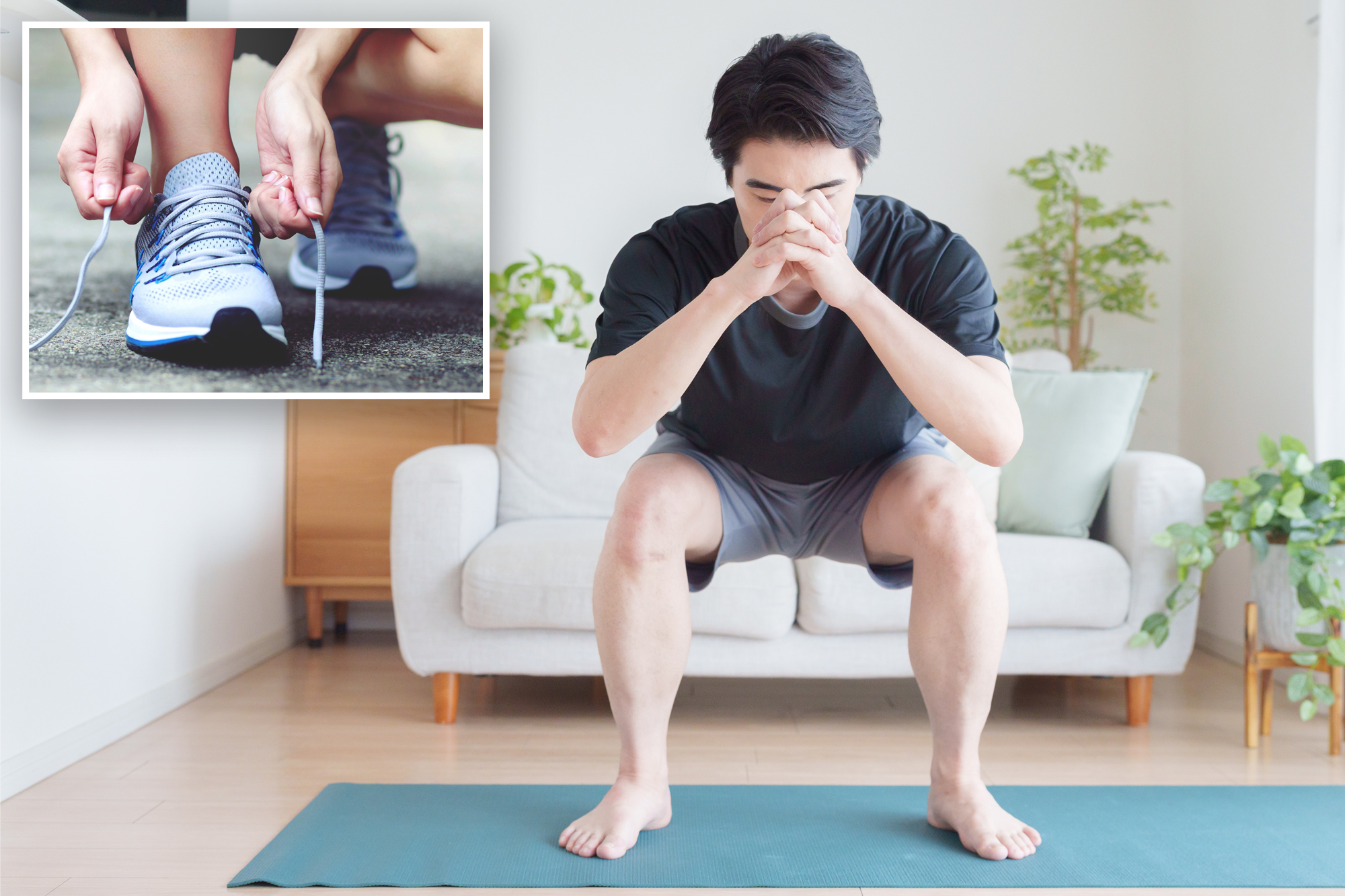
Don’t start stripping down at the gym just yet.
Experts say that dressing up a little less for workouts can have some big benefits for your body, but it’s less about showing off your curves than it is about your arches.
You may have noticed that the person lifting weights next to you at the gym isn’t wearing shoes, or maybe you’ve walked past a fitness trainer on TikTok sitting barefoot.
It’s not just a do-it-yourself post-isolation habit at home: Many pediatricians, trainers, and even orthopedic surgeons say there are advantages to working out in bare feet.
“Walking barefoot offers a number of benefits for balance, mobility and coordination,” Nick Clayton, personal training program manager for the National Strength and Conditioning Association, told Muscle & Fitness.
“It provides feedback to your nervous system, helping to activate your glutes and core to improve stability. It also helps strengthen the deep muscles that stabilize the leg, which translates into improvements for the ankles, knees, hips and back.”
So how does it work – and when should you ignore the trend and get tired anyway?
Body stabilization
Allowing your feet to make full contact with the ground—with socks, of course, if you’re in public—can be stabilizing.
“When you stimulate the nerves in your foot, you better understand what you’re standing on and how you’re stepping, and that starts to shape your overall movement,” functional podiatrist Emily Splichal, DPM, told Shape.
This can manifest itself in different ways, depending on the exercise.
“For example, in a squat, with shoes on, it might look and feel good—but without shoes, it might feel completely different. This allows you to assess what’s going on with your hips, knees, or ankles,” added Lacee Lazoff. , a trainer at Performix House in New York City.
It can also mean that you are able to lift more weight.
“You have a lot more stability at the core when you’re barefoot,” Splichal told Muscle & Fitness. “And the higher your core stability, the more weight you can move during exercise.”
Increased flexibility
If you’re looking for a better range of motion—perhaps as you get older—this can give you a boost, according to Gregory Alvarez, a podiatrist at Foot and Foot Centers of America.
“Walking barefoot allows a greater range of motion in the foot and ankle joints, leading to improved flexibility and mobility, which is particularly beneficial for women looking to increase fluidity of movement in everyday life or during exercise ,” he told Women’s Health.
Harm reduction
Alvarez added that training without shoes can reduce the risk of some ankle or foot problems.
“Barefoot training encourages the body to use natural alignment starting from the feet, which can help improve posture, reduce back pain and increase overall movement efficiency,” he explained.
Just make sure that if you run barefoot, you’ll build up your tolerance over time – if you go too fast, you’re actually more likely to get injured.
“When ‘Born to Run’ [a book about barefoot running] it turned out, I saw so many patients who had injured themselves jumping into full-force barefoot running,” Gennady Kolodenker, DPM, a pediatrician at the Hoag Orthopedic Institute in California, told Self.
He said stress fractures, plantar fasciitis and Achilles tendinitis are among the most common injuries, but they mostly happen because people don’t take it easy and gradually build up their strength.
When to put your shoes back on
General strength training is fine barefoot, but if you’re lifting much more than your body weight, you should wear proper weightlifting shoes with strong soles.
“It’s easier to balance and it’s a lot more consistent,” Mark Rippetoe, a weightlifting coach and author of Beginning Strength: Basic Barbell Training, told the New York Times.
Running barefoot outside is also a good way to step on something you shouldn’t, so grab your shoes if you’re taking a walk around the neighborhood.
#Removing #part #garment #workouts #pros
Image Source : nypost.com